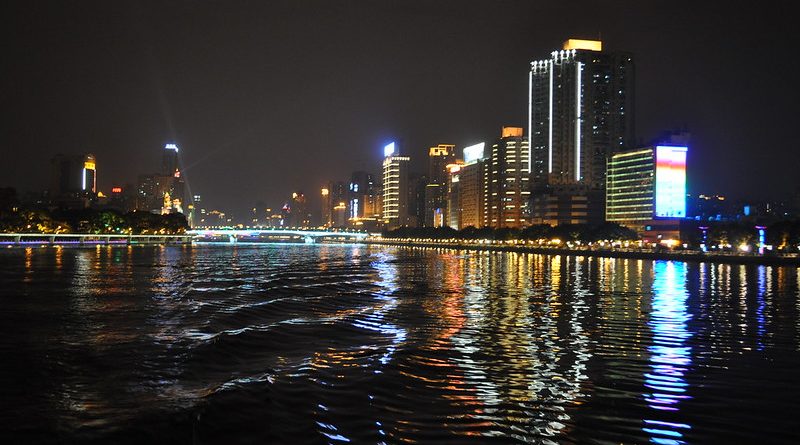China’s Mega Cities
If you visit China today, you will see something that was not on our radar two decades ago: mega cities of giant scale with tens of millions of inhabitants, spectacularly modern technology and infrastructure, deeply connected to the world economy but virtually empty of foreign inhabitants.
Foreigners make up 0.3 per cent of the population of Beijing. Of the 20mn inhabitants of Chengdu, the capital city of Sichuan province, the foreign population comes to a mere 0.08 per cent.
The Sinosphere has its own cultural-linguistic logic. The Chinese language erects huge barriers to in-migration. But, at the same time, command of simplified Mandarin creates a shared culture for at least one-eighth of humanity. That opens the path to mass migration.
Beijing may not have many foreign inhabitants but almost 40 per cent of its population has recently arrived from other parts of China. Likewise in India’s tech hub Bengaluru, the foreign population is tiny but more than half of the city’s inhabitants are migrants from the rest of India.
These are not global cities as once imagined, but they are hubs and nodes in large and innovative societies that account for an increasingly large share of the world economy. The online life of their citizens further exemplifies these trends. The denizens of China’s mega cities, like their counterparts everywhere, live on smartphones, consuming round the clock flow of news, gossip and the essential services of daily life, all exclusively in Mandarin.
The Great Firewall separates this world from the west. But linguistic hurdles and the gravitational pull of China’s social media system also naturally enclose the Chinese internet. Even if you choose to use a VPN and a translate app, who has the time and energy to keep up with another digital world of this intensity? When the Chinese leadership launched its vision of “dual circulation” in May 2020, it was seen as a geoeconomic master plan for competition with the US. China would build a robust circuit of domestic consumption and innovation while leveraging a separate circuit of international trade. Increasingly, however, it looks less like policy and more like the description of a new mode of global economic development. Instead of mixing and fusing the world in the melting pot, China’s cities are giant national and regional centres, interacting intensively with the wider world but at arm’s length.
Here are some of the most notable mega cities
1. Shanghai:
Population; 26 million
Key Industries: Finance, trade, tech, shipping (home to the world’s busiest port)
The largest city in China and a global financial hub, Shanghai is known for its stunning skyline, including the iconic Oriental Pearl Tower and the historic Bund. Attractions include the Yu Garden and the Shanghai Museum.
2. Beijing:
Population: 22 million
Key Industries: Government, tech (Zhongguancun), education, culture
The capital city is is home to famous landmarks such as the Forbidden City, Tiananmen Square, and the Great Wall nearby. Beijing is also known for its hutongs—traditional narrow alleyways .
3. Guangzhou;
Population: 18 million
Key Industries: Trade, manufacturing, automotive (Canton Fair)
As the capital of Guangdong province, Guangzhou is a major trade and transportation hub. It’s known for its Cantonese cuisine, markets, and cultural sites like the Chen Clan Ancestral Hall and the Canton Tower.
4. Shenzhen:
Population: 17.5 million
Key Industries:Tech (Huawei, Tencent, DJI), manufacturing, innovation
Often referred to as “China’s Silicon Valley,” Shenzhen is a tech powerhouse known for its rapid urbanization and innovation. The city is known for its modern architecture, shopping districts, and attractions like the Window of the World theme park.
5. Chengdu:
Population: 22 million
Key Industries: Tech (Sichuan tech hub), aerospace, pandas
Famous for its spicy Sichuan cuisine and as the home of the giant panda, Chengdu is a city that combines modernity with laid-back charm. The Chengdu Research Base of Giant Panda Breeding and the historic Jinli Street are popular attractions.
6. Tianjin:
Population: 14 million
Key Industries: Port logistics, aerospace, petrochemicals
Located near Beijing, Tianjin is known for its European-style architecture and the Haihe River. The city has a rich maritime history and features attractions like the Tianjin Eye and the Ancient Culture Street.
7. Hangzhou:
Population: 12 million
Key Industries: E-commerce (Alibaba), tech, tourism (West Lake)
Renowned for its picturesque West Lake, Hangzhou is a city that blends natural beauty with cultural heritage. It’s famous for tea production, particularly Longjing tea, and offers scenic spots like the Lingyin Temple.
8. Xi’an:
Known as the starting point of the Silk Road, Xi’an is famous for the Terracotta Warriors and its ancient city wall. The city has a rich history that dates back thousands of years, reflected in its numerous historical sites.
9. Wuhan:
Population: 12 million
Key Industries: Auto manufacturing (Dongfeng), biotech, education
The capital of Hubei province, Wuhan is a major transportation hub with a vibrant cultural scene. The city is known for its lakes, parks, and historical sites like the Yellow Crane Tower.
10. Nanjing:
Once the capital of several Chinese dynasties, Nanjing is rich in history. Key attractions include the Nanjing Massacre Memorial, Sun Yat-sen Mausoleum, and the beautiful Xuanwu Lake.
11. Chongqing
Population: 32 million (largest by administrative area)
Key industries: Manufacturing, logistics, automotive
Common features of China’s Mega Cities include massive Infrastructure projects such High-speed rail networks and sprawling subways, Urban Challenges include traffic congestion, high living costs, and pollution Smart City Initiatives include heavy investment in AI, 5G, and green urban planning.
China continues to urbanize, with plans to further integrate city clusters such as the Greater Bay Area(Guangzhou-Shenzhen-Hong Kong-Macao) , Yangtze River Delta (Shanghai-Hangzhou-Nanjing) and Jing-Jin-Ji (Beijing-Tianjin-Hebei)
These mega cities are central to China’s ambition to become a global leader in technology, finance, and sustainability.
With thanks to The Financial Times
Destination: China




